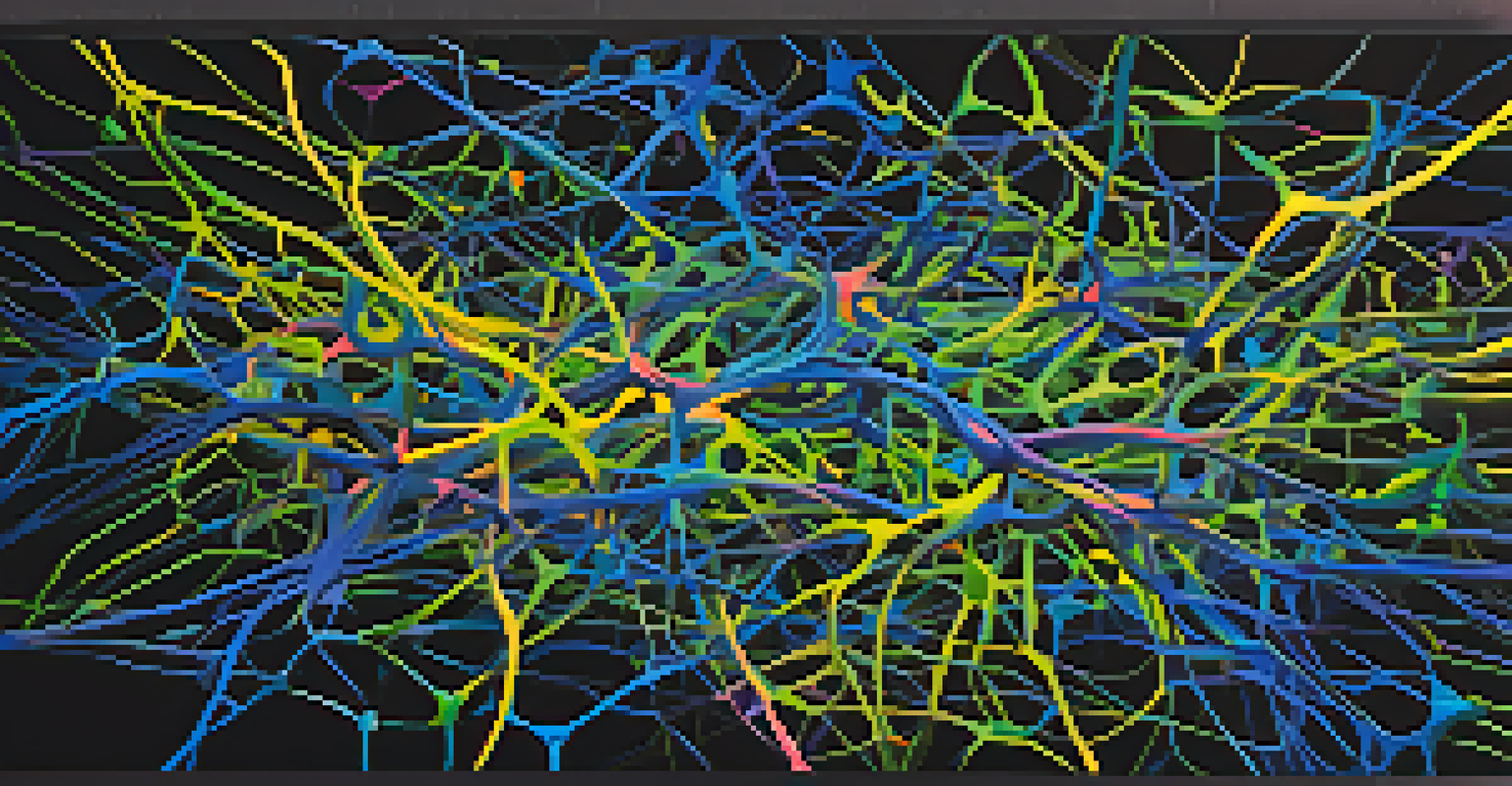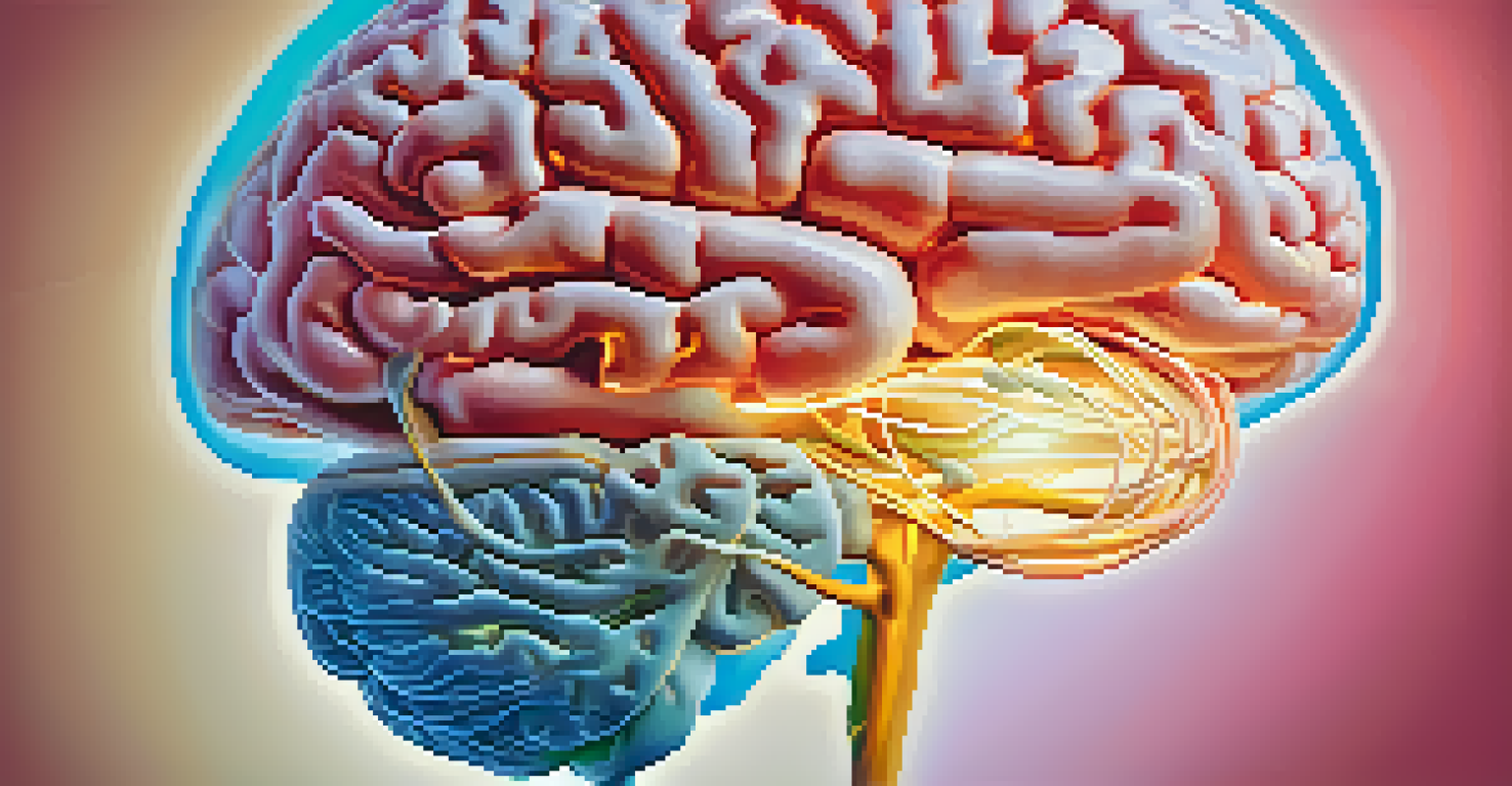Psychedelics and Neural Receptors: A Deep Dive

What Are Psychedelics and Their Historical Context?
Psychedelics are substances that alter perception, mood, and cognitive processes. They have been used for centuries in various cultures, particularly in religious and spiritual contexts. From the ancient use of peyote by Native Americans to the modern exploration of substances like LSD and psilocybin, these compounds have evolved in their application.
Psychedelics have the potential to unlock the human mind and lead to profound personal insights and healing.
In the mid-20th century, psychedelics gained popularity in Western society, sparking both scientific interest and cultural movements. However, their association with counterculture led to a backlash, resulting in strict regulations. Today, there's a renewed interest in their therapeutic potential, highlighting the importance of understanding how they work on a biological level.
Understanding the history of psychedelics helps us appreciate their complex relationship with society and science. This journey from taboo to therapeutic opens the door to exploring how these substances interact with our brain's neural receptors.
Neural Receptors: The Brain's Communication Hubs
Neural receptors are proteins in the brain that receive signals from neurotransmitters, the brain's chemical messengers. Think of them as tiny locks waiting for the right key, which in this case are the neurotransmitters. When these keys fit into the locks, they trigger various responses that affect our mood, perception, and behavior.

There are several types of neural receptors, including serotonin receptors, which are especially relevant when discussing psychedelics. These receptors play a significant role in regulating mood, anxiety, and sensory perception. Understanding how these receptors function is crucial for grasping how psychedelics can lead to profound changes in consciousness.
Psychedelics' Historical Journey
Psychedelics have transitioned from ancient spiritual tools to subjects of modern scientific research, revealing their complex relationship with society.
By delving into the mechanics of neural receptors, we can better comprehend the intricate dance between brain chemistry and psychedelic experiences, setting the stage for exploring specific interactions.
The Role of Serotonin Receptors in Psychedelics
Serotonin receptors, particularly the 5-HT2A receptor, are key players in how psychedelics exert their effects. When psychedelics like LSD or psilocybin bind to these receptors, they mimic serotonin, leading to altered perceptions and feelings. This interaction is a significant factor in the unique experiences reported by users.
The most important thing that psychedelics can teach us is that there are many ways to experience consciousness.
Research indicates that the activation of 5-HT2A receptors enhances communication between different brain regions, which may explain the often reported feelings of interconnectedness and expanded consciousness. This increased connectivity can lead to novel insights and a sense of unity with the universe, experiences that many users describe as life-changing.
By understanding the specific role of serotonin receptors, we can appreciate the science behind the psychedelic experience and its potential therapeutic applications.
Exploring Other Neural Receptors Affected by Psychedelics
While serotonin receptors are the stars of the show, other neural receptors also play a crucial role in the psychedelic experience. For instance, the NMDA receptor, which is involved in memory and learning, can be influenced by certain psychedelics, leading to altered states of awareness.
Additionally, dopamine receptors contribute to the rewarding aspects of psychedelics, influencing mood and motivation. This complex interplay of different receptors highlights the multifaceted nature of how psychedelics impact the brain, leading to diverse experiences.
Serotonin's Role in Psychedelics
The 5-HT2A serotonin receptor is crucial for the psychedelic experience, enhancing brain connectivity and altering perceptions.
Recognizing the broader spectrum of receptors affected by psychedelics allows us to paint a fuller picture of their potential effects on mental health and cognition.
Therapeutic Potential: Psychedelics in Mental Health
As research into psychedelics resumes, their therapeutic potential is becoming increasingly clear. Studies suggest that substances like psilocybin can effectively treat conditions such as depression, PTSD, and anxiety. By targeting specific neural receptors, these compounds can help reset maladaptive neural pathways.
For many individuals, traditional treatments may not provide adequate relief, making the exploration of psychedelics an exciting frontier in mental health. The ability of these substances to promote neuroplasticity—our brain's ability to reorganize itself—opens new avenues for healing.
Understanding the therapeutic potential of psychedelics not only reinforces the importance of neural receptors but also sparks hope for innovative treatments in mental health care.
Challenges and Considerations in Psychedelic Research
Despite the promising potential, researching psychedelics comes with challenges. Regulatory hurdles and societal stigma can hinder scientific inquiry, making it difficult to fully understand their effects. Additionally, the variability in individual responses to psychedelics complicates the research landscape.
Ethical considerations also loom large, especially regarding informed consent and the psychological impact of psychedelic experiences. Ensuring that participants are fully aware of potential risks and benefits is crucial for responsible research.
Therapeutic Potential in Mental Health
Research suggests psychedelics can effectively treat mental health conditions like depression and PTSD by promoting neuroplasticity.
Navigating these challenges is essential for advancing our understanding of psychedelics and their interactions with neural receptors, paving the way for responsible exploration.
The Future of Psychedelics and Neural Receptor Research
Looking ahead, the future of psychedelics and neural receptor research is filled with potential. As societal perceptions shift and more studies are conducted, we may uncover new therapeutic applications and deepen our understanding of consciousness itself. This could lead to groundbreaking treatments for various mental health issues.
Moreover, advancements in technology, such as neuroimaging techniques, will allow researchers to observe how psychedelics affect brain activity in real-time. This insight can help us decipher the complex interactions between psychedelics and neural receptors.

In conclusion, the ongoing exploration of psychedelics promises to enrich our understanding of the mind, offering exciting possibilities for both science and mental health treatment.